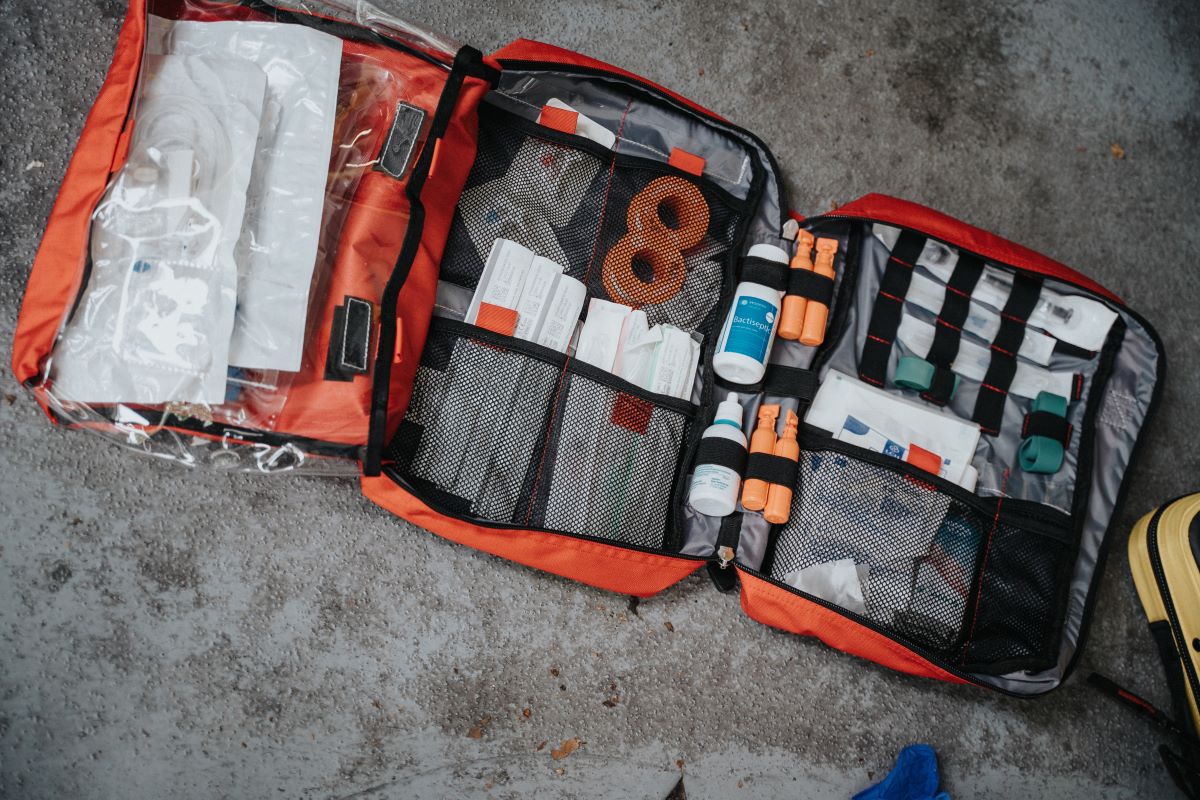Introduction
When it involves conserving lives, couple of abilities are as crucial as Cardiopulmonary Resuscitation (CPR). Whether you're an onlooker or an experienced doctor, understanding how to properly carry out mouth-to-mouth resuscitation can imply the distinction between life and fatality. One aspect that frequently generates dispute among physician and nonprofessionals alike is the slow compression rate throughout CPR. This write-up delves deep right into the nuances of CPR, exploring exactly how a slow-moving compression rate can be stabilized with effective lifesaving techniques.
In this thorough overview, we'll cover whatever from basic vs advanced life support to the procedures associated with public defibrillator usage. We'll likewise discover subjects such as checking responsiveness, recognizing no breathing, and preserving composure during an emergency situation. By the end of this article, you'll have a durable understanding of mouth-to-mouth resuscitation and its numerous elements, making you far better prepared to act when it counts.
Slow Compression Rate: Locating the Right Balance in CPR
Understanding the ideal compression price is necessary for effective mouth-to-mouth resuscitation. The American Heart Association (AHA) suggests a compression price of 100-120 compressions per min for grownups and kids. However, some professionals argue that in certain circumstances-- especially when adrenaline is high-- a slower compression price might in fact enhance blood circulation.
Understanding Compression Rates
Compression rates refer to how quickly breast compressions are provided during CPR. The ideal balance is critical; also quickly can bring about inadequate blood circulation, while too slow could not produce adequate stress to sustain crucial organs.
Why Slow Compression Rates?
While most standards advocate for quick compressions, there are scenarios where a slower strategy might be required:
Fatigue: When rescuers weaken quickly. Precision Over Speed: Making sure each compression works could require slowing down down. Rescuer Coordination: Taking turns on compressions typically needs modifications that can bring about periodic slow-moving rates.Basic vs Advanced Life Support
The difference between standard and advanced life assistance can substantially impact your method to performing mouth-to-mouth resuscitation.
Basic Life Assistance (BLS)
BLS involves crucial techniques like chest compressions and rescue breaths targeted at sustaining life until expert aid shows up:
- Checking responsiveness Identifying no breathing Maintaining calmness during emergencies
Advanced Life Support (ALS)
ALS consists of a lot more sophisticated medical treatments delivered by experienced health care professionals:
- Use of medications Advanced air passage management Monitoring crucial signs
Understanding these differences will aid you understand when and exactly how to apply numerous strategies effectively.
Checking Responsiveness: The Very First Step
Before jumping into CPR, inspecting responsiveness is important for analyzing whether an individual needs immediate assistance. A straightforward method is:
Gently touch the person's shoulder and shout loudly. Look for any kind of indicators of motion or verbal response.If they do not respond, proceed with inspecting their breathing.
Identifying No Breathing: A Secret Indicator
Identifying no breathing or uncommon breathing patterns is important for figuring out whether CPR is needed:
Look for upper body rise. Listen for breath sounds. Feel for breath on your cheek.If there's no typical breathing after 10 secs, begin breast compressions immediately.
Public Defibrillator Use: An Essential Tool
Public Access Defibrillators (PADs) conserve lives by restoring heart rhythm during cardiac arrest situations:

- Familiarize yourself with their place in public spaces. Follow voice triggers offered by AEDs; they are made to guide you through each step.
Using an AED together with slow-moving compression rates can substantially raise survival chances.
BLS Qualification: Empowering You with Knowledge
Obtaining BLS accreditation equips individuals with necessary lifesaving skills:
Learn appropriate techniques for adult, youngster, and infant resuscitation. Understand healthcare facility codes and methods associated with heart attack situations.Having this expertise can impart confidence when confronted with real-life emergencies.
Taking Activates Compressions: Staying Clear Of Fatigue
When executing mouth-to-mouth Click here! resuscitation alone can cause fatigue very quickly; thus taking turns with one more rescuer comes to be necessary:
- Switch every 2 mins or when fatigued. Ensure smooth shifts without pausing compressions.
This technique helps keep appropriate blood circulation throughout the period of the emergency situation.
Lower Compression Deepness: When Is It Acceptable?
Typically, the suggested depth for adult compressions has to do with 2 inches (5 centimeters). Nonetheless, certain circumstances may require reduced depths:
Very small adults or teenagers may require modifications based upon body type. Situations involving pregnant ladies may additionally call for customized strategies for security reasons.Always prioritize effective compressions over adhering rigidly to deepness metrics if scenarios warrant it.
Maintaining Composure Under Demanding Circumstances
Composure during emergency situations can not be overemphasized:
- Take deep breaths before responding. Focus on your training as opposed to panicking.
Keeping tranquility permits you to think clearly and perform techniques better throughout high-pressure scenarios like cardiac arrest events.
FAQs
What ought to I do if I see a person collapse?
Immediately examine responsiveness by calling their name or tapping their shoulder carefully; if unresponsive and not breathing usually within 10 secs, call emergency solutions and start mouth-to-mouth resuscitation immediately.
How do I know if my compressions are effective?
Look for noticeable signs of flow; if their breast rises noticeably after each compression or you really feel a pulse return shortly after starting mouth-to-mouth resuscitation-- these are excellent indicators!
Are there any type of age-specific considerations in CPR?
Yes! Modifications must be made based on age; infants call for mild taps while kids need lighter stress contrasted to grownups that gain from much deeper compressions approximately 2 inches in depth.

What occurs if I make errors while carrying out CPR?
Even imperfect attempts at mouth-to-mouth resuscitation are better than not doing anything in any way! Adhere to the basic actions vigilantly-- emergency responders will certainly take over once they arrive however your intervention can conserve a life!
How does using an AED fit into my CPR efforts?
An Automated External Defibrillator should be made use of as soon as it's offered-- follow its prompts thoroughly while continuing chest compressions until prompted otherwise by the tool itself!
Why ought to I seek BLS certification?
BLS qualification supplies invaluable abilities that empower people not just professionally however personally-- it prepares you both mentally and literally for emergencies so you can act decisively!
Conclusion
Finding the right balance in between rate and performance in administering mouth-to-mouth resuscitation really affects results in emergency situations involving cardiac arrest targets. From understanding basic vs advanced life assistance principles through inspecting responsiveness all while mastering public defibrillator use-- it's clear that education and learning plays a substantial duty in gearing up individuals with lifesaving skills needed today especially prior to! Taking these facets into account along with identifying when slower compression prices might show valuable ensures that everybody-- from laypersons to healthcare professionals-- can confidently take part in acts of heroism despite situation!

By embracing understanding around these fundamentals-- and acquiring certifications-- we're all qualified factors towards building safer communities geared up against unexpected emergency situations waiting simply around our corners! So prepare individuals-- the next time a person requires aid-- you'll understand specifically what actions have to be taken!
First Aid Pro | First Aid Course Perth (RTO 31124) is one of Australia’s leading providers of accredited First Aid and CPR training. We specialise in Basic Life Support, CPR & First Aid, NDIS HISS, AED, and many other accredited courses. Our training is both convenient and comprehensive, combining online and face-to-face learning options to suit your needs. Keep your first aid certificates up to date with same-day certification upon completion. Plus, find a lower price, and we’ll instantly beat it by 10%! Conveniently located at 195 Adelaide Terrace, Perth, WA 6004. Visit our website for course dates, directions and parking details.
First Aid Pro | First Aid Course Perth (RTO 31124) is a nationally recognised leader in First Aid and CPR training. Our Perth training centre delivers accredited courses including CPR, Basic Life Support, AED, NDIS High Intensity Support Skills (HISS), and comprehensive First Aid certifications. We make training flexible and convenient with a blend of online learning and practical, face-to-face classes. Get same-day certification so you can stay compliant and confident in emergencies. Plus, with our Price Beat Guarantee, if you find a lower price, we’ll beat it by 10% on the spot. Located at 195 Adelaide Terrace, Perth, WA 6004, our venue is central, easy to access, and designed for a great learning experience. Visit our website to check course dates, directions, and parking details.